Table of Contents
What is Prism?
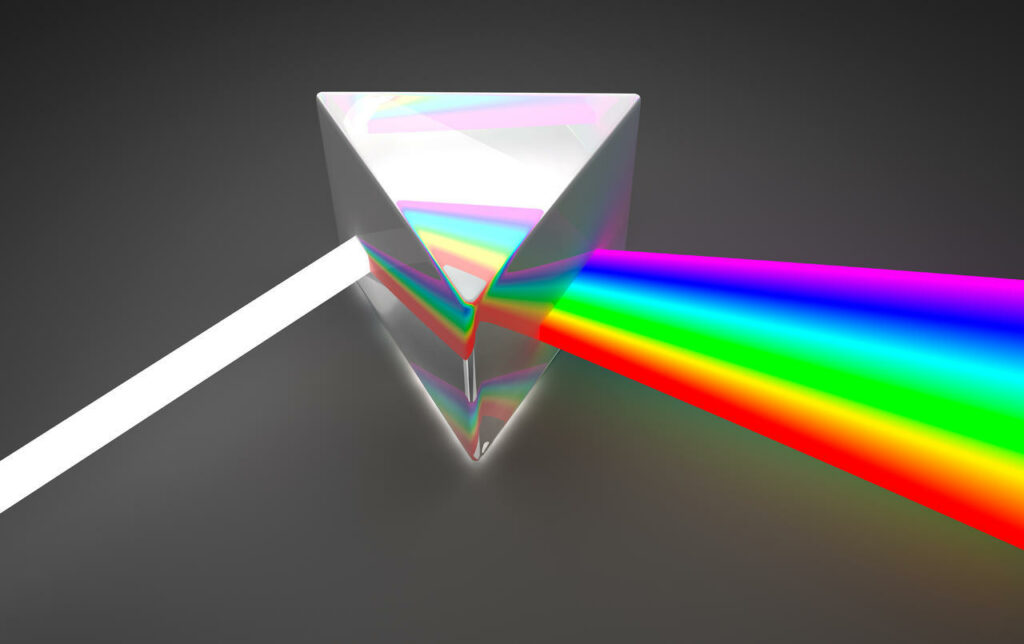
Optical prisms are transparent optical components composed of multiple intersecting but non-parallel surfaces. They are designed to manipulate light by deflecting, shifting, or rotating light beams or images through specific angles of reflection between these surfaces. This precise control of light is achieved based on the optical prism’s design and intended application.
Optical prisms exhibit dispersive properties, which means they can disperse light into its constituent wavelengths by bending them at different angles. This separation occurs because the degree of bending is determined by the angle at which light strikes the prism optical surface and the refractive index of the prism optics’ material. This dispersion property is particularly valuable in spectrometry and spectroscopy, where it enables the analysis of different wavelengths of light for various scientific and analytical purposes.
Prism Types
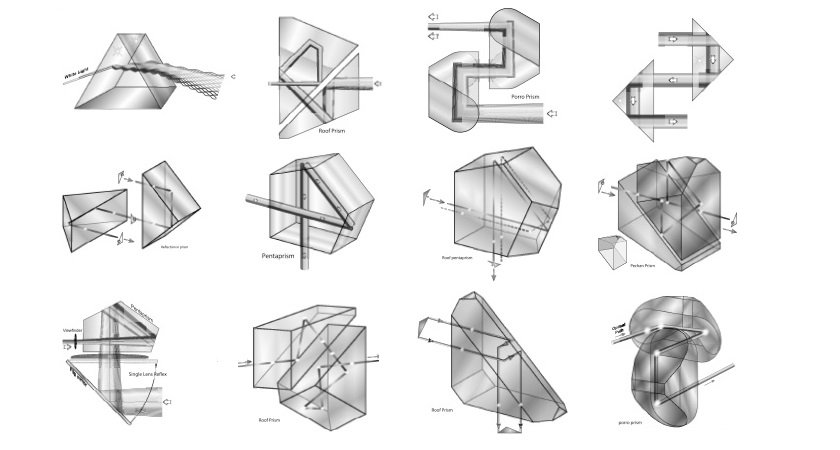
Generally, there are four major types of prisms, including dispersive prisms, deflection or reflection prisms, rotation prisms, and offset prisms, each with its own unique characteristics and applications:
1) Dispersive Prisms:
Dispersive prisms are designed to separate white light into its constituent colors or wavelengths by refracting each color at a slightly different angle. The most common example is the triangular prism, which spreads light into a spectrum, creating a rainbow-like effect. These prisms are essential in spectrometers and spectroscopes for analyzing the spectral composition of light sources.
2) Deflection or Reflection Prisms:
These prisms are used to deflect or change the direction of light without altering its color or wavelength. Examples include Penta prisms and Porro prisms. Penta prisms, for instance, reflect an incident light beam at a 90-degree angle, making them valuable in applications where maintaining the orientation of the image or beam path is crucial, such as in binoculars.
3) Rotation Prisms:
Rotation prisms, also known as rotary prisms or rotators, are used to rotate the orientation of an image or beam by a specific angle. They are often employed in optical systems where image inversion or orientation adjustments are necessary. Amici prisms are common examples of rotation prisms.
4) Offset Prisms:
Offset prisms are designed to offset or shift the optical axis of a beam without altering its direction or wavelength. They are useful for aligning optical components or redirecting a light path within a limited space. Examples include Schmidt prisms.
These different types of optical prisms are fundamental components in various optical instruments and systems, serving specific functions to manipulate and control light as needed for a wide range of applications.
Below we will take an in-depth look at how each type of optical prism works, as well as their common types.
Dispersive prisms
Dispersive prisms are used to disperse light, that is, to separate monochromatic light into complex-colored light. Disperse light of different wavelengths to different angles and separate the spectrum. Dispersive prisms play a key role in spectroscopic instruments, spectral analysis and color display.
a. Working principle of dispersive prisms
Dispersion is an optical phenomenon that refers to the change in the refractive index of a material as a function of the frequency of incident light. This means that light of different frequencies or wavelengths will travel at different speeds in the same material, causing the light to bend and scatter. When white light passes through a prism since the refractive index is related to the frequency of the light, light wavelengths of different colors will be refracted at different angles, thus causing dispersion. This is why white light is broken down in a prism into a spectrum of seven colors, including red, orange, yellow, green, blue, indigo, and violet. These principles have wide applications in spectroscopic analysis and optical instrumentation.
b. Typical dispersive prisms
In optics, a dispersive prism is a type of optical prism. The usual cross-sectional shape is a geometric triangle. Dispersive prisms of other shapes or prism groups used for dispersion are also generally called dispersive prisms.
Triangular prism
A triangular prism is a commonly used dispersive prism, usually made of transparent materials such as glass, with precise angles and cutting planes. Its applications in optics include analyzing and reflecting light. This type of prism is commonly used in some spectroscopic instruments to analyze light and determine the properties and structure of materials, especially to study the emission and absorption properties of light.
Prism Cone
Prism Cone can be used to disperse light and deflect light waves at different angles according to their different wavelengths.
c. Dispersive prisms applications
Dispersion occurs in a prism because different light colors undergo different degrees of bending (refraction) due to the unique refractive index in the prism material. The geometry of the prism, particularly its apex angle, affects how much these colors diffuse or disperse. Therefore, dispersive prisms can be tailored through different optical materials and geometries to serve a wide range of optical and laser technology applications.
— Dispersion Generation:
Dispersive prisms can be designed to produce the required dispersion in order to study the properties of light propagating through materials.
— Dispersion compensation:
Dispersive prisms can be used to introduce appropriate dispersion to balance the dispersion effects introduced by other optical components in the system.
— Pulse broadening compensation:
In ultrafast laser systems, the time width of the pulse is very short, but due to the dispersion effect of optical materials, light of different frequencies propagates at different speeds when passing through the material, causing the pulse to broaden during propagation. Dispersion prisms can compensate for this dispersion, ensuring that the pulses remain compact.
Reflective prism
An optical component in which one or more reflective working planes are made on the same piece of glass is called a reflective prism. The main function of the reflective prism in the optical system is to change the optical path, invert or deflect the image, etc. Since the reflection mirror has almost no energy loss when total reflection occurs, and has the advantages of not being easily deformed and being easy to install and adjust, in optical instruments, reflection prisms are often used instead of flat mirrors for small reflective surfaces.
a. Working principle of reflective prisms
The working principle of reflective prism is actually the law of reflection and refraction of light. When light is reflected in the same medium, its reflection angle is equal to the incident angle; when light is incident from one medium to another medium perpendicular to the two medium planes, no refraction occurs.
b. Typical reflective prisms
The reflective prisms can be classified based on the number of times these prisms reflect light. One reflection means that the light has been reflected only once, two reflections means that the light has been reflected twice, and three reflections means that the light has been reflected three times. The name of each prism type usually reflects its purpose and specific light path design.
(1) one-reflection prism
A one-reflection prism is equivalent to a single-plane mirror and forms a mirror image of the object. The most commonly used is the isosceles right-angle prism.
Right-Angle Prism:
A right-angle prism is a deflecting prism often used to reflect light.
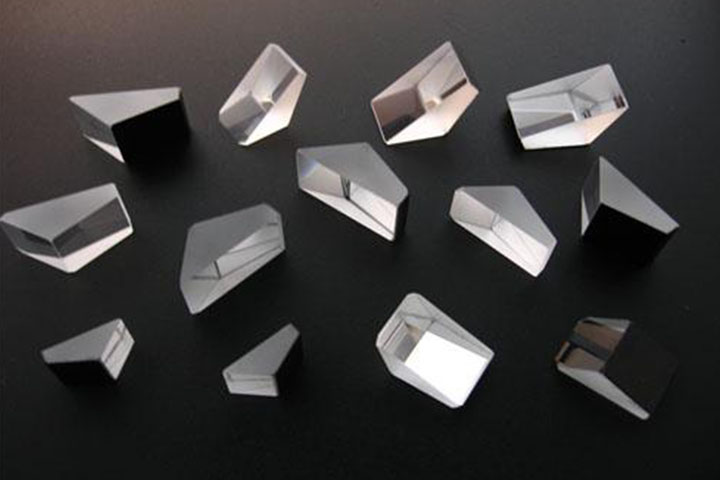
(2) two-reflection prism
This type of reflective prism is equivalent to a biplane mirror system, including
Powell Prism:
The Powell prism is a reflecting prism widely used in telescopes.
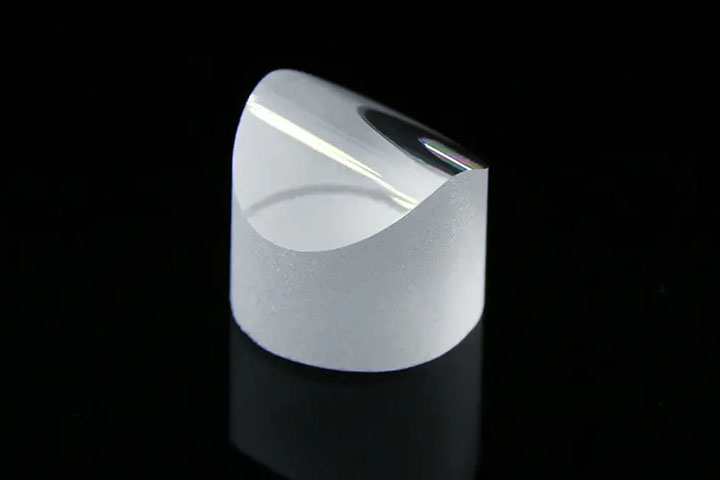
Dove Prism:
A Dove prism is a reflective prism used to change the direction of the light path.

(3) three-reflection prism
Roof Prism:
Roof prisms are often used as reflecting prisms, such as in telescopes.
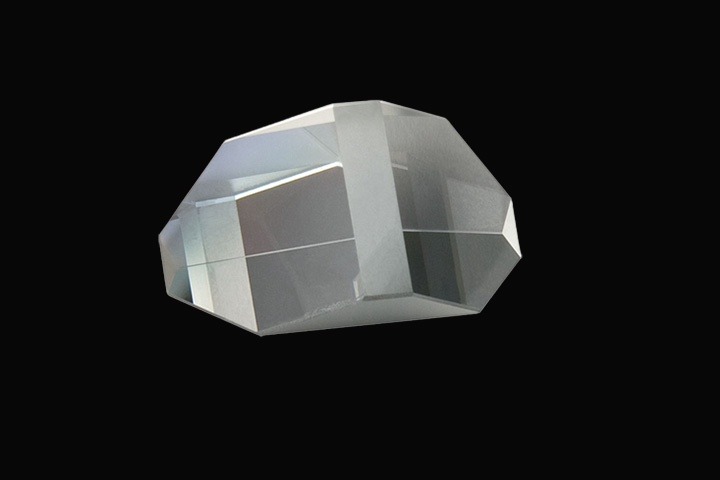
Equilateral Prism:
Equilateral prisms are often used as reflective prisms to change the direction of light.
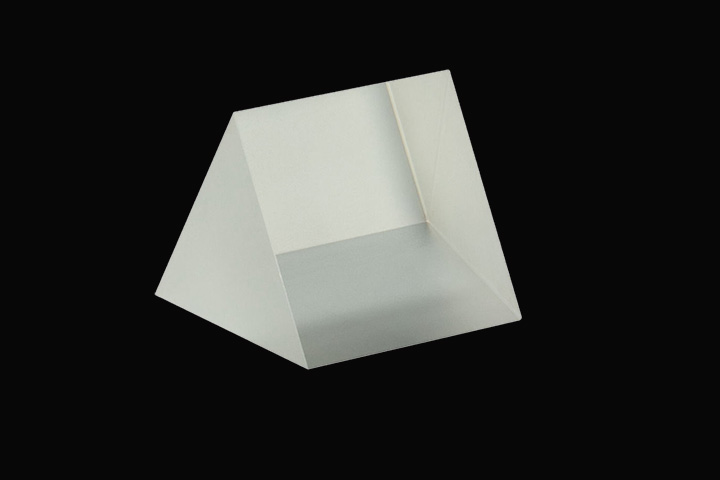
c. Reflective prisms applications
— Measuring
Reflecting prisms have a wide range of applications in the field of measurement. Total stations and other surveying instruments often use reflecting prisms to measure distances and angles. These reflective prisms reflect the light signal back to the measuring instrument, allowing the measuring instrument to calculate the time of flight of the light signal and thereby determine the distance.
The key to these applications is to accurately measure the travel time of light signals in order to determine distance with high accuracy. Reflecting prisms need to be designed and manufactured to meet precise optical requirements to ensure measurement accuracy and repeatability. Therefore, these reflective prisms usually have highly precise optical surfaces and special coatings to ensure the stability and reliability of reflected light.
— Imaging
These prisms can also be used in a variety of imaging applications, common reflecting prisms include Porro prisms, which are used in telescopes to invert images, and pentaprism/pentaprism systems in cameras, which are used for exposure measurement and control. These prisms can achieve the desired optical effect through precise design and reflective surfaces.
Rotary prisms
Rotary prisms are prisms that can be rotated to control the direction of a beam. They are widely used in equipment such as measuring instruments and are also used in rotating prisms in cameras for photometers and exposure control.
Dove prisms

They are usually used to rotate or flip the optical path to rotate the image so that the image direction can be corrected. This allows the observer to see the image in the correct orientation, rather than an inverted or upside-down image. This is useful in some optical devices and instruments, such as telescopes, microscopes, and other optical systems.
Offset prisms
Offset prisms are used to offset or translate the optical path without changing the direction of the light rays. These prisms are used in various optical systems such as periscopes and endoscopes.
Wedge Prism:
A wedge prism is a prism used to shift the path of light and is commonly used in optical instruments.
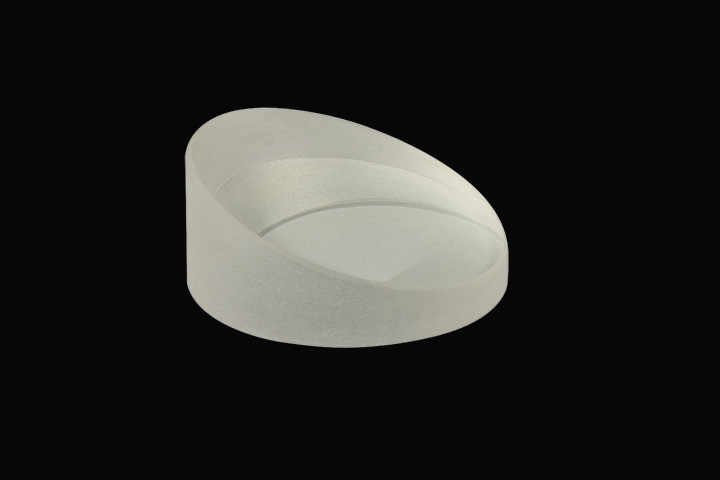
Penta Prism:
Penta Prism is usually used to offset the light path and maintain the direction of the light. The steering angle of the pentagonal prism beam is 90°, and the image formed has neither rotation nor specular reflection. When the prism rotates around the intersection of the reflecting surface as the axis, the beam steering angle is 90° for all incident light rays. The movement of the prism cannot change this property of the prism. It is a key component of test instruments such as levels and distance meters. It can also be used as a rotating reflector for aligners and is also an essential optical tool.
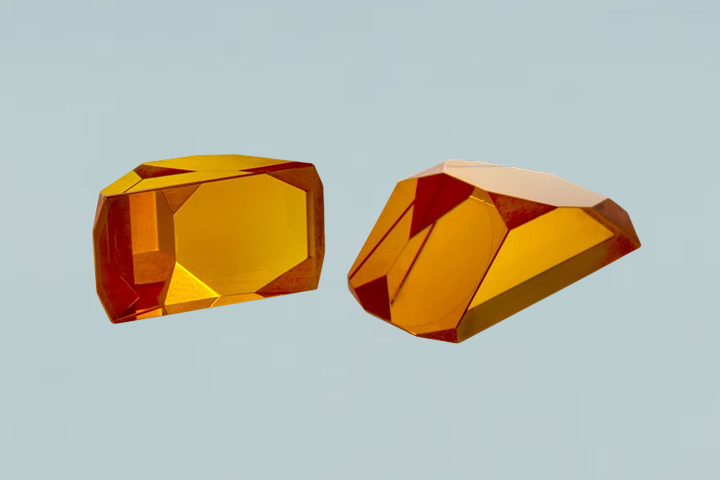
Applications of Prism
How to use a prism depends to its types and your optical demands, and the main function of prism is to refract light to reflect (reflective prism), disperse (dispersive prism) or split (beam splitter) light. Optical prisms can be made into many different forms and shapes depending on the application. For example, a Porro prism consists of two prisms. These two prisms invert the image and are used in many optical observation instruments such as periscopes, binoculars, and monoculars.
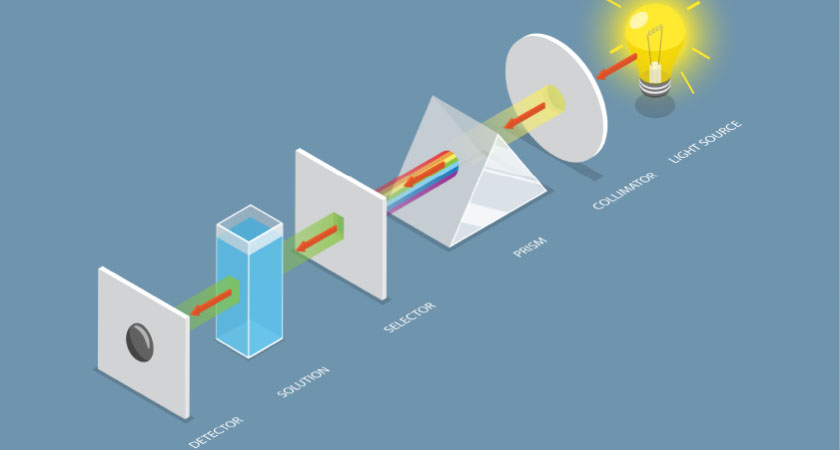
Prisms can be used in spectroscopy to separate white light into its component colors, and in surveying to measure angles. They are also used in optical communication systems, such as optical fibers, to manipulate and transmit light signals.
Selection Guide
From above, we already know how a prism works and the specific uses of prisms, and choosing a suitable prism is no longer a difficult task, but you still need to grasp all the details. The selection of a prism is usually determined by the desired application. We determine the type of prism required based on the required optical performance and then select the appropriate material and specific shape to achieve our optical needs.
First we need to clarify which of the following our optical requirements are:
Refract and deflect light: Optical prisms can refract and deflect light depending on their shape and refractive index. This makes them useful in optical systems for changing and controlling light paths.
Dispersing light: Certain prisms, such as dispersive prisms, disperse light according to wavelength, keeping different wavelengths of light separate. This is useful in spectrometers and spectrometers.
Reflecting light: Some prisms are designed to reflect light rather than refract it. These reflecting prisms are commonly used in reflecting telescopes and other optical systems.
Secondly, we need to clarify whether there are special application requirements, such as:
Parallel Faces: Some prisms have two or more parallel faces that can be used to translate light rays parallel without changing their direction.
Birefringence: Some optical materials, such as quartz and ice, have birefringent properties, which means they can split light into two different polarization directions.
Combination of reflection and refraction: Some prisms are designed to have both reflection and refraction functions to achieve specific optical effects.
Finally, we finalize the specific optical parameters, which will ultimately determine the material and geometry of the prism.
Angle and shape: The angle and shape of the prism can be designed as needed to achieve specific optical functions. For example, prisms can be used to focus or expand light.
Material Selection: Prisms are usually made of glass, but any material can be used as long as the material is transparent and suitable for the design wavelength. Common materials include glass, plastic, and fluorite.The choice of specific materials depends on the requirements of the application.
If you have any difficulties in prism selection, you can contact our team to get professional solution at any time.
Conclusion
NONI Optics provides customized prisms of various sizes, substrates, and coating systems, including equilateral prisms, right-angle prisms, roof prisms, corner pyramids, Powell prisms, Dove prisms, wedge prisms, and pentagonal prisms, etc. The base material processing capabilities include but are not limited to K9 optical glass, zinc selenide, quartz, UV fused quartz, sapphire, Ge, etc. All materials can be optionally uncoated or coated with reflective coating or anti-reflection coating.
We use different processing methods, such as traditional polishing, or ion beam polishing technology and advanced testing equipment, to provide tailor-made high-precision optical prisms for various optical applications. Please contact us for your exclusive professional optical solution.